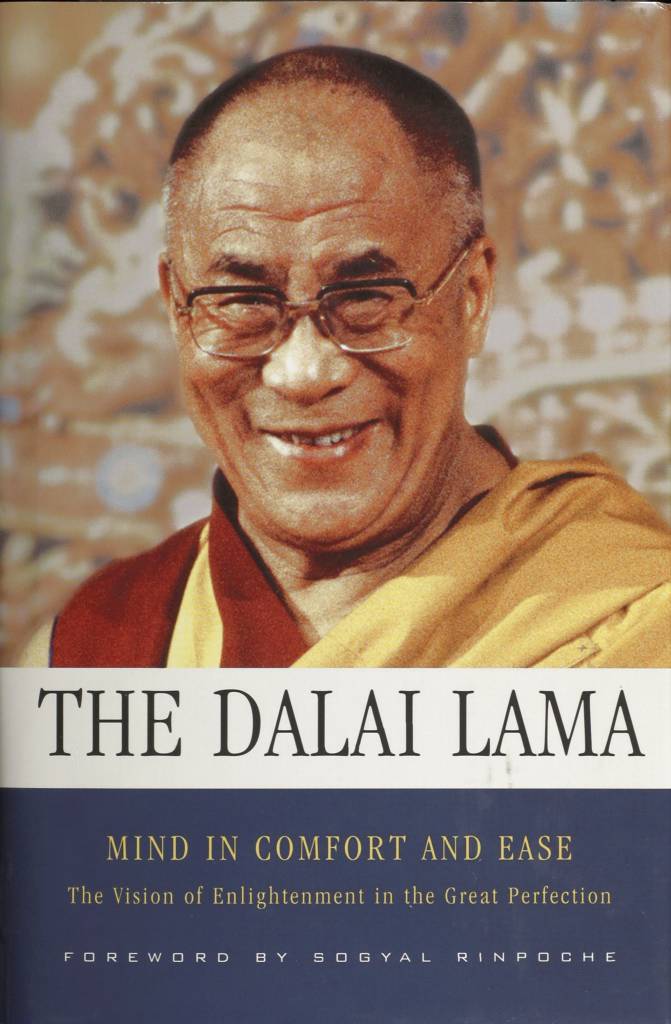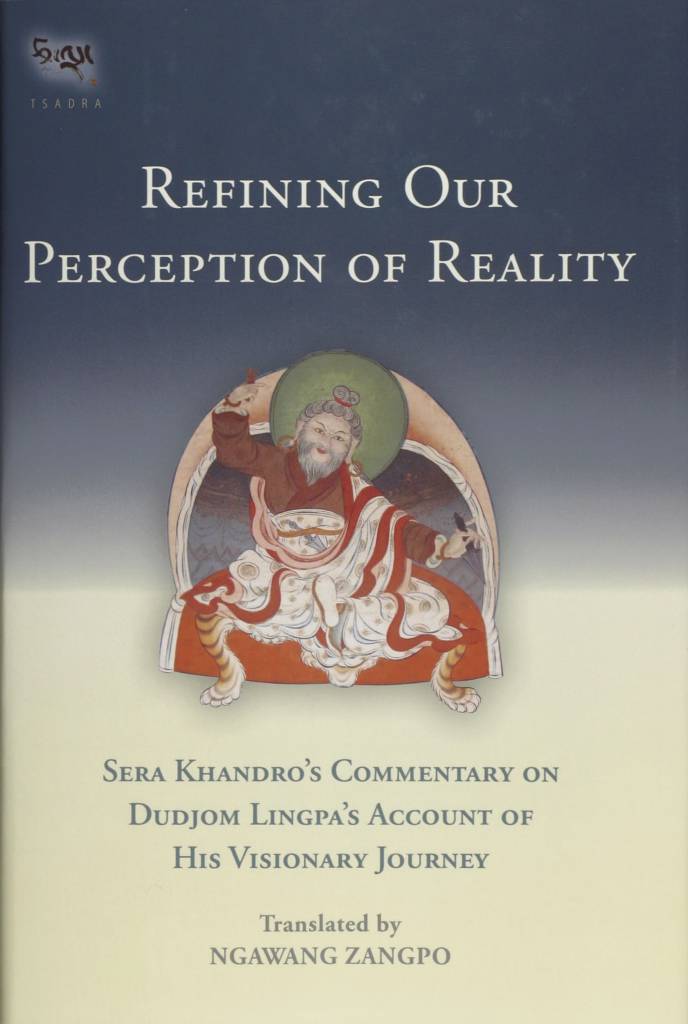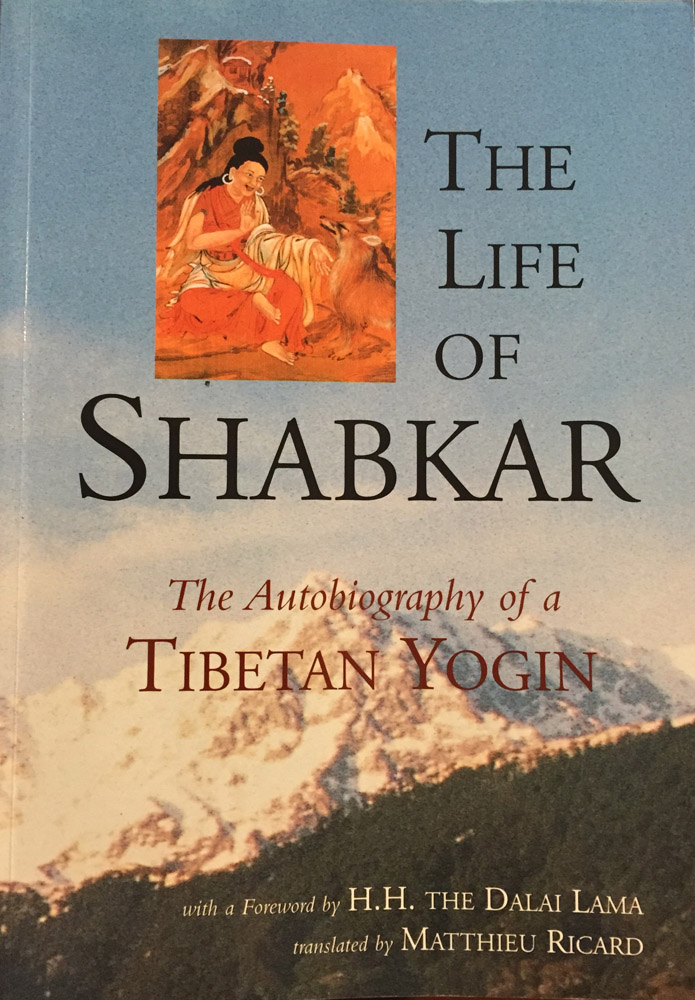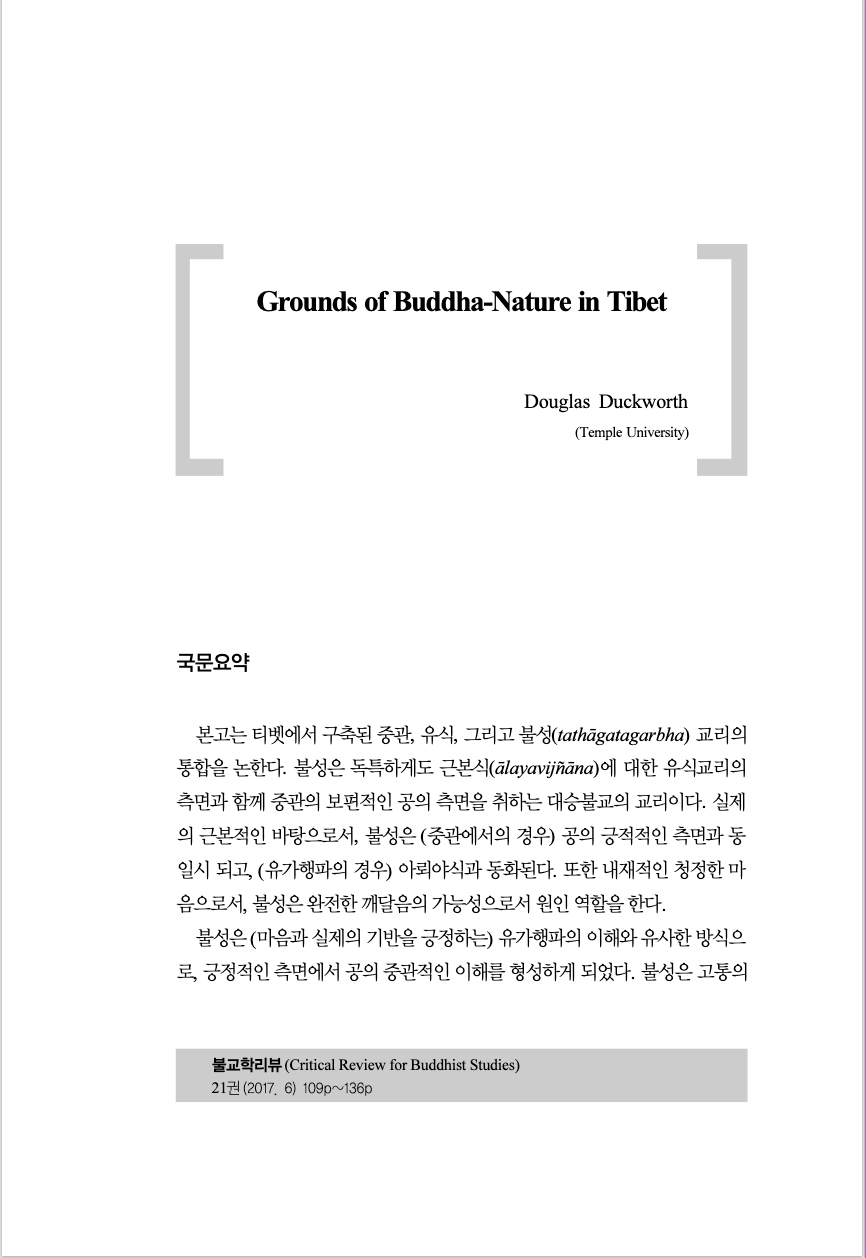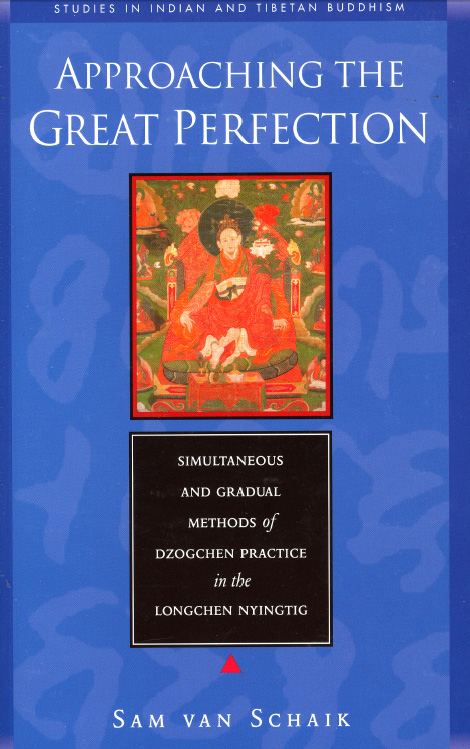Dzogchen and Buddha-Nature
Watch & Learn
From the Masters
Nyenchen Palyang
Sugatagarbha, the nature of mind, appears in each and every mind-stream that grasps a 'self' among the long-deluded sentient beings while its very nature remains one with the dharmakāya of the victorious ones.~ Higgins, David. The Philosophical Foundations of Classical rDzogs chen in Tibet: Investigating the Distinction Between Dualistic Mind (sems) and Primordial Knowing (ye shes). Wien: Arbeitskreis für Tibetische und Buddhistische Studien, Universität Wien, 2013, p. 174.
Rongzompa
The term *sugatagarbha is widely known in ordinary [scriptures] which claim that all sentient beings possess the cause of awakening [and] are endowed with the seed of incorruptibility. According to the profound [scriptures], it is called the ‘quintessence of awakening’ (*bodhigarbha) because the very nature of mind is awakening.~ Higgins, David. The Philosophical Foundations of Classical rDzogs chen in Tibet: Investigating the Distinction Between Dualistic Mind (sems) and Primordial Knowing (ye shes). Wien: Arbeitskreis für Tibetische und Buddhistische Studien, Universität Wien, 2013, p. 177.
In the higher vehicles, the characteristic of the ālaya [kun gzhi] is that it is the primordial awakened mind [bodhicitta]. The afflictions and the imprints that lead to birth in the lower realms are adventitious obscurations, like oxide covering gold, or dirt covering a precious jewel. Although the buddha qualities are temporarily hidden, their nature is not defiled.~ van Schaik, Sam. Approaching the Great Perfection: Simultaneous and Gradual Approaches to Dzogchen Practice in Jigme Lingpa's Longchen Nyingtig. Boston: Wisdom Publications, 2004, p. 63.
In sum, then, consider the nature of bodhicitta: all phenomena, outer and inner, appearance and existence, are nondual bodhicitta—the primordial nature of the quintessence of awakening (*bodhigarbha, snying po byang chub) is primordially perfected (yas nas sangs rgyas ba), not something refined and corrected through a path, and is accomplished spontaneously, without effort.
Longchenpa
The primordial, luminous nature of the mind is self-arisen primordial wisdom, empty and clear. By nature, it is empty like space, yet its character is luminous like the sun and moon. And the radiance of its cognitive potency manifests unceasingly and unobstructedly like the surface of a limpidly clear mirror, free from stain. Having thus the nature of the dharmakāya, saṃbhogakāya, and nirmāṇakāya, the sugatagarbha is unconfined and is not limited either to saṃsāra or nirvāṇa. Its empty nature provides the open arena necessary for the manifestation of all things; its luminous character allows the five self-arisen lights to appear as sense-objects; and its cognitive potency—self-cognizing primordial wisdom—manifests as the detecting cognition owing to which, delusion is said to occur.~ Longchenpa. Finding Rest in the Nature of the Mind. Translated by the Padmakara Translation Group. The Trilogy of Rest Volume 1. Boulder, CO: Shambhala, 2017, pp. 235–36.
Jikme Lingpa
In the context of the ground of Dzogchen, Jigme Lingpa begins chapter 11 of The Treasury of Precious Qualities with a clear statement about the importance of buddha-nature, given in the text as bde gshegs snying po (sugatagarbha):
- །།རྒྱལ་བས་འཁོར་ལོ་བར་པར་རྣམ་ཐར་གསུམ།
།བསྟན་བྱའི་ངོ་བོ་སོ་སོ་རང་རིག་ཉིད།
།སེམས་ཅན་ཁམས་ལ་བདེ་གཤེགས་སྙིང་པོ་རུ།
།རང་བཞིན་བཞུགས་ལ་རྫོགས་པ་ཆེན་པོར་གྲགས།- In the second turning of the Dharma wheel,
The Conqueror explained three doors of perfect liberation,
The essence of this teaching is awareness that is self-cognizing,
Which, celebrated as the Great Perfection,
Naturally resides in beings as their buddha-nature.~ Rigdzin Jigme Lingpa. The Treasury of Precious Qualities called The Rain of Joy. Translated by the Padmakara Translation Group. New Delhi: Shechen Publications. Tibetan Text: རིག་འཛིན་འཇིགས་མེད་གླིང་པ། ཡོན་ཏན་རིན་པོ་ཆེའི་མཛོད་དགའ་བའི་ཆར་ཞེས་བྱ་བ་བཞུགས་སོ༎ New Delhi: Shechen Publications, 2018, p. 113.
Dudjom Lingpa
In the collection of his accounts of visionary encounters, known as Refining Apparent Phonemena (snang sbyang), Dudjom Lingpa states:
- །སེམས་ཉིད་བདེ་གཤེགས་སྙིང་པོ་ཞེས་བྱ་བ་ནི་ཕྱལ་བ་སྐྱོན་གྱིས་མ་གོས་པ།
- The nature of mind itself, referred to as 'buddha nature,' is a uniform pervasiveness unsullied by flaws.
~ Dudjom Lingpa. Buddhahood Without Meditation: A Visionary Account Known as Refining Apparent Phenomena (Nang-Jang). Translated by Richard Barron. Junction City, CA: Padma Publishing, 1994, pp. 108–9.
Mipam Gyamtso
In his Trilogy of Innate Mind, Mipam states:
- གཤེགས་སྙིང་ནི་སྟོང་ཀྱང་ཙམ་མིན་ཏེ། སྟོང་ཉིད་འོད་གསལ་ཡིན།
དེ་ཆོས་ཐམས་ཅད་ཀྱི་ཡེ་ཐོག་གཞི་ཡི་གནས་ལུགས་ཡིན།
ཟུང་འཇུག་བདེན་པ་དབྱེར་མེད་ཀྱི་གནས་ལུགས་རྣམ་ཀུན་མཆོག་ལྡན་གྱི་སྟོང་ཉིད་ཡིན་ལ་- Buddha-nature is not a mere absence; it is emptiness and luminous clarity.
It is the abiding reality of the ground of the primeval beginning of all phenomena,
the abiding reality that is the indivisible truth of unity—emptiness endowed with all supreme aspects.~ Duckworth, Douglas S. Mipam on Buddha-Nature: The Ground of the Nyingma Tradition. Albany, NY: State University of New York Press, 2008, p. 105.
Zhechen Gyaltsab, 4th
Buddha-nature is immaculate. It is profound, serene, unfabricated suchness, an uncompounded expanse of luminosity; nonarising, unceasing, primordial peace, spontaneously present nirvana.~ Shechen Gyaltsap Pema Namgyal and Shechen Rabjam Jigme Chokyi Senge. The Great Medicine: A Remedy That Conquers Clinging to Reality. Steps in Meditation on the Enlightened Mind. Explanations on Shechen Gyaltsap's Poem by Shechen Rabjam. New Delhi: Shechen Publications, 2006, p. 4.
Yukhok Chatral Chöying Rangdrol
In regards to the lama's introduction Yukhok Chatralwa states:
- སེམས་ཅན་ཐམས་ཅད་ཀྱི་རྒྱུད་ལ་བདེ་གཤེགས་སྙིང་པོ་ཡེ་ནས་བཞུགས་པ་ལ་ཆོས་སྐུ་གཞི་གནས་ཀྱི་རིག་པ་ཟེར། དེ་བླ་མའི་མན་ངག་གི་ངོ་སྤྲོད།
དེ་ལ་གོམས་ནས་སྒྲིབ་པ་ཅི་རིགས་པ་དག་པའི་རྣལ་འབྱོར་ལམ་གྱི་ལྟ་བ་ཡིན། ངོ་སྤྲད་པ་དེ་ནི་གཞིའི་འོད་གསལ་དེ་ལས་གཞན་མ་ཡིན་པས་འདི་ཁོ་ནའོ།
- Dwelling from time immemorial as buddha-nature (sugatabarbha) in the mind-streams of all sentient beings, is that which we call the awareness (rigpa) of the abiding ground of the dharmakāya. That is the introduction of the lama’s pith instructions. It is the view of the path of yogis that have purified all manner of obscurations through familiarization with that. Since that which is introduced in none other than the luminosity of the ground, there is only this.
~ G.yu khog bya bral chos dbying rang grol. Tshig gsum gnad brdeg gi zin bris kyi don bkrol ba. In G.yu khog bla ma bya bral chos dbyings rang grol gyi gsung 'bum. Chengdu: Si khron mi rigs dpe skrun khang, 2007, Vol 2, p. 198.
Dudjom Jikdral Yeshe Dorje
In the mind of everyone, of every living, sentient being, there is a fundamental nature or ground, the so-called sugatagarbha. This is the seed of Samantabhadra, the seed of buddhahood. Although this is something we all have, we do not recognize it. It is unknown to us. This ground, which is our spontaneous awareness, has been with us "from the beginning." It is like a mirror. When someone with a happy face looks in a mirror, the reflection of a happy face appears. When someone with a sad face looks into it, a sad face appears. The primordial ground is just like a mirror. The reflection of a person with a happy face looking into a perfectly clear mirror, the primordial ground, is like Samantabhadra, who awoke to his ultimate nature. Samantabhadra, it is said, "captured the citadel of the primordial ground, awoke, recognized his own nature, and was free." But we ordinary beings fail to recognize this nature, the mirrorlike primordial ground. For us, the situation is like someone with a downcast face looking into the mirror: a sad reflection appears!~ Dudjom Rinpoche. Counsels from My Heart. Translated by Padmakara Translation Group. Boston: Shambhala Publications, 2003, p. 17.
Tulku Urgyen Rinpoche
Empty cognizance is our nature. We cannot separate one aspect of it from the other. Empty means 'not made out of anything whatsoever'; our nature has always been this way. Yet, while being empty, it has the capacity to cognize, to experience, to perceive. It's not so difficult to comprehend this; to get the theory that this empty cognizance is buddha nature, self-existing wakefulness. But to leave it at that is the same as looking at the buffet and not eating anything. Being told about buddha nature but never really making it our personal experience will not help anything. It's like staying hungry. Once we put the food in our mouth, we discover what the food tastes like. This illustrates the dividing line between idea and experience.
[...]
We must grow up, just like a new-born baby. The way for us to do this is through training. The infant born today and the adult 25 years later is essentially the same person, isn't he? He is not someone else. Right now, our nature is the buddha nature. When fully enlightened, it will also be the buddha nature. Our nature is unfabricated naturalness. It is this way by itself: like space, it does not need to be manufactured. Do we need to imagine the space in our room? It's the same with buddha nature. But we do need to allow the experience of buddha nature to continue through unfabricated naturalness.~ Tulku Urgyen Rinpche. Rainbow Painting: A Collection of Miscellaneous Aspects of Development and Completion. Hong Kong: Rangjung Yeshe Publications, 1995, pp. 80 and 84–85.
Yangthang_Rinpoche
The "mind nature teaching", the "practice experience", and the "meditation" are all different names for the same thing, which essentially is that all sentient beings possess the foundational buddha nature. How is it that they have come to possess this buddha nature, which is, in fact, their innate presence, their inherent essence? How is it that this is the fundamental nature of all living beings? This is what the lama reveals to the disciples in what is called the "sem tri", which is an introduction to the mind's nature. After receiving this introduction, through training and through one's ability to naturally comprehend, when one ascertains the nature as it is, this ascertainment is called "the view". The view is then the primary practice. Maintaining the view for months and years, with enthusiastic effort, is called "meditation". While one is engaged in meditation, the unfailing ability to observe one's behavior according to cause and result is called the "conduct". When view, meditation, and conduct reach their resultant stage through the effort of the practitioner, then in dependence upon the capabilities of the practitioner—be they superior, mediocre, or inferior—the corresponding result will occur. In the superior case the result will be the dharmakaya realization, in the mediocre case realization will occur at the moment of death, and so forth. The threefold practice of view, meditation, and conduct, and the results achieved thereby, are the subject of this type of mind nature teaching.
[...]
The view of the Great Perfection is that now, as we consider all sentient beings, we consider that they all possess the essence of the sugatas, the foundational buddha nature. This is the basis of all sentient beings. From the time of becoming a sentient being until the time of becoming a buddha, all beings possess this nature. There is no one who does not possess this nature—it is utterly all-pervasive. It is not the case that buddhas, who obviously possess this nature, are better than sentient beings, who also possess this nature but are considered not to be as good as buddhas because they are sentient beings. There is actually not even a hair's-worth of difference between a buddha and a sentient being when it comes to the buddha nature. The foundational nature possesses all of the qualities of enlightened body, speech, mind, pure qualities, and concerned activity of an enlightened being. Without exception, all of these qualities are perfected in the buddha nature.~ Yangthang Rinpoche. Introduction to the Nature of Mind - Oral Teaching by the Venerable Yangthang Rinpoche. Translated by Sangye Khandro. Edited by Ian Villarreal. Mt. Shasta, CA: Yeshe Melong Publications, 1994, pp. 3 and 8.
Nyoshul Khenpo Jamyang Dorje
Buddha-nature is pure, undefiled, unelaborated, unconditioned, transcending all concepts. It is not an object of dualistic thought and intellectual knowledge. It is, however, open to gnosis, intuition, the nondual apperception of intrinsic awareness itself, prior to or upstream of consciousness. Adventitious obscurations temporarily veil and, like clouds, obscure this pristine, sky-like, luminous fundamental nature or mind essence- also known as tathagatagarbha, buddha-nature.~ Nyoshul Khenpo and Lama Surya Das. Natural Great Perfection: Dzogchen Teachings and Vajra Songs. Ithaca, NY: Snow Lion Publications, 1995, p. 79.
Lama Tharchin Rinpoche
We are sentient beings. This means that our mind's fundamentally confused. Still at the essence level, we are buddhas because our essence is the buddha-nature which is always free of causes and conditions. Our buddha-nature can never be dissected into many parts and it cannot be said to be singular. It is beyond singularity and plurality. It is uncompounded like the sky and never changes. Therefore, there is no way for suffering to arise within the experience of the buddha-nature.
[...]
The solution is to realize our buddha-nature, the esence of our mind, the undeluded state that never leaves us even for a single moment. But, even though we can understand that this is the solution, we still have a problem because our confused mind cannot recognize our buddha-nature. And why is that? It's simply because confused mind doesn't believe in buddha-nature. It believes in itself, in its own power, and in the power of circumstances. If it tries to see the buddha-nature, it says do it this way, don't do it that way; this is right, this is wrong. Using this approach, no matter how hard confused mind tries to see the buddha-nature, it never will because it is fundamentally confused and deluded. Of course, confused mind can create temporary happiness and success but that will, sooner or later, become suffering. So, to solve the problem, what must be identified, one way or the other, is the unchangeable, uncompounded buddha-nature, the essence of deluded mind.~ Guru Yoga In the Foundational Practices, Austin, Texas 2009, Scribd.
Dzongsar Khyentse
When we talk about emptiness, something beyond fabrication, we immediately think of a state of being that has no function, like a couch potato or piece of stone, but that is absolutely not correct. It is not merely a negation, elimination, or denial. It is not like the exhaustion of a fire or the evaporation of water. It is full of function, and we call this function buddha activity, which is one aspect of buddhanature. This buddhanature has an aspect of uninterrupted wisdom. This is the difficulty, because as soon as we talk about wisdom, we think in terms of cognition and the senses and their sense objects. We are curious about how a buddha perceives things. But although buddhanature is seemingly a cognizer, it has no object, and therefore it cannot be a subject. Furthermore, it’s not inanimate, nor is it animate, in the sense of mind. This is why the Uttaratantra Shastra is really complementary to the Mahasandhi (Dzogchen) teachings, which always say that mind and wisdom are separate—the dualistic mind of subject and object is separate from the nondual wisdom, which is not other than buddhanature.~ Dzongsar Khyentse. "Spotless from the Start." Buddhadharma: The Practitioner's Quarterly, 2008.
Further Readings
[Dzogchen Explained]
The key to ascending through the eight phases [of Dzogchen practice] is to appreciate and settle into the Dzogchen perspective on reality, according to which the fundamental nature of ourselves—and the cosmos—is our inner pristine awareness (rikpa), also described by terms such as buddhanature, the dharma-body of a buddha, or pure, absolute space.
[...]
Dzogchen asserts, with other Mahayana traditions, not only that we all have within us the capacity to become fully enlightened buddhas but also that in some sense we already are buddhas, in that pristine awareness is the fundamental nature of ourselves and the world simply waiting to be rediscovered. This sort of "gospel of buddhanature," running counter to the "tragic sense of life" influential in traditional European culture, is more appealing to many Western seekers, accustomed as they are to the psychological lingo of self-improvement, than are accounts of Buddhism that dwell on our delusion and the sufferings they incite and emphasize that attaining enlightenment is a process requiring years, and perhaps lifetimes, of effort.
[Finding Rest in the Nature of Mind]
The sutras of definitive meaning belonging to the final turning of the wheel of the Dharma clearly reveal the great secret of all the Buddhas just as it is. These sutras are the Dhāraṇīśvararājaparipṛcchā-sūtra, the Śrīmālādevīsiṃhanādaparipṛcchā-sūtra, the Ratnadārikāparipṛcchā-sūtra, the Vimaladevīparipṛcchā-sūtra, the Aṅgulimālīya-sūtra, the Mahāparinirvāṇa-sūtra, the Maitreya-paripṛcchā-sūtra, and the Tathāgatagarbha-sūtra. These sutras teach that the dharmadhātu, that is, the intrinsically pure nature of the mind or buddha-element (khams), the essence of the Tathāgatas (the tathāgatagarbha), is primordially present in all beings. It is present from the very beginning and it is unchanging. Spontaneously, and from the very first, its appearing aspect is the source of the major and minor marks of the rūpakāya (the body of form); and its emptiness aspect is the dharmakāya (the body of ultimate reality) beyond all conceptual extremes. Since all enlightened qualities are naturally present within it, it is like a jewel; since it is unchanging, it is like space; and since it pervades all beings, as if moistening them, it is like water. By means of all such metaphors the tathāgatagarbha is set forth.
[Mind in Comfort and Ease]
As long as we have not yet removed the adventitious stains, the fundamental innate mind of clear light is referred to as the sugatagarbha, and the potential for the three kayas that is inherently present is referred to as the qualities of basic space. When the adventitious stains that cloud our true nature are removed, the potential for these kayas, which has always been present within the fundamental innate mind of clear light, is activated or made manifest and becomes “the qualities of fruition.” Therefore the kayas and buddhahood are both intrinsic to the fundamental innate mind of clear light.
[Refining Our Perception of Reality]
The main presentation of pervasive insubstantial evenness has three parts: pervasive insubstantial evenness of the ground of being, of the spiritual path, and of the result.
First, the ground of being is the nature of mind endowed with buddha nature. Before sentient beings became deluded, no faults, defilements, or habitual patterns whatsoever stained them. Thus, this is the pervasive insubstantial evenness of the ground of being.
Second, during the circumstance of sentient beings’ delusion, that delusion’s power prevents them from seeing the characteristics of the ground of their being. Nevertheless, the nature of that ground is pure; the fact that that enlightenment’s supreme bodies and wisdoms naturally dwell there is the pervasive insubstantial evenness of the spiritual path.
Third, at the time of final enlightenment, the ground of being (the lord that no faults, defilements, or habitual patterns have ever stained since primordial time) becomes manifest, without the addition of any new qualities. For instance, the sun’s essence during three circumstances—before clouds cover it, during its covering, and once it is free from clouds—has no change whatsoever, positive or negative. Lord Bodhisattva Maitreya states:
- As it was before, so it is later:
- it is the changeless nature.
[The Life of Shabkar]
"Pure vision," the extraordinary outlook of the Vajrayana or Adamantine Vehicle, is to recognize Buddha-nature in all sentient beings and to see primordial purity and perfection in all phenomena. Every sentient being is endowed with the essence of Buddhahood, just as oil pervades every sesame seed. Ignorance is nothing more than lack of awareness of this very Buddha-nature, as when a pauper does not see the golden pot buried beneath his own hut. The spiritual path is thus a rediscovery of this forgotten nature, just as one sees again the immutable brilliance of the sun once the clouds that were masking it have been blown away.
~ Translator's Introduction, p. xvii
The Vajrayana path is based on pure perception and is motivated by the aspiration to free swiftly oneself and others from delusion through skillful means. The Mahayana chiefly considers that the Buddha nature is present in every sentient being like a seed, or potentiality. The Vajrayana considers that this nature is fully present as wisdom or pristine awareness, the undeluded aspect and fundamental nature of the mind. Therefore, while the former vehicles are known as "causal vehicles," the Vajrayana is known as the "resultant vehicle." As it is said, "In the causal vehicles one recognizes the nature of mind as the cause of Buddhahood; in the resultant vehicle one regards the nature of mind as Buddhahood itself." Since the "result" of the path, Buddhahood, is primordially present, one only needs to actualize it or divest it of its veils.
~ p. 551
The fruit of the Great Perfection
Is primordially present as the Buddha nature.
It does not need to be obtained:
It is ripe within oneself.
~ p. 554
[Grounds of Buddha-Nature in Tibet]
The distinction that Śākya Chokden makes between two types of self-awareness reflects the distinction Longchenpa made between self-awareness (rang rig) in Yogācāra (or "Mind-Only") and the gnosis of self-awareness (so sor rang rig pa'i ye shes) in the Great Perfection (rdzogs chen). Longchenpa's distinction between the basic consciousness (kun gzhi) and the Truth Body (chos sku) similarly conveys this fundamental difference between distorted and undistorted worlds. In fact, Longchenpa distinguished his view of the Great Perfection from that of "Mind-Only" in terms of buddha-nature, expressed as the "basic element" (khams):
- Proponents of Mind-Only assert a changeless permanence and mere [ordinary] awareness as self-illuminating, but this position differs because we assert the unconditioned spontaneous presence beyond permanence and annihilation, and the spontaneously present qualities of the basic element."
[Approaching the Great Perfection]
The conflict between immanence and distinction is present within the scriptural texts of the Seminal Heart, from the Seventeen Tantras down to the Longchen Nyingtig's treasure texts. And it is in the Longchen Nyingtig's treasure texts themselves that some attempt to reconcile that conflict can be detected in the frequent appearance of the buddha nature model.


